Key Takeaways
Is Your HealthTech Product Built for Success in Digital Health?
.avif)
Every healthcare system runs on an invisible workforce. It isn’t made up of doctors, nurses, or administrators. It’s the 53 million Americans who provide unpaid care to parents, spouses, children, and relatives—often quietly, often alone.
They are the ones driving late-night pharmacy runs, balancing medical appointments with full-time jobs, and asking tired questions over the phone: How are you feeling today? They make sacrifices that don’t appear in hospital budgets but shape patient outcomes as much as any clinical decision.
And yet, despite their scale, caregivers remain largely unsupported by technology. That’s where founders like Wynter Johnson, co-founder of Caily, are trying to change the story.
This blog post is based on a recent episode of Keep IT Healthy, Momentum’s podcast about the builders, technologists, and innovators shaping the future of healthcare. In this episode, Jan Kamiński (our Co-Founder and CSO) sits down with Wynter Johnson to explore why caregiving is healthcare’s invisible infrastructure—and how technology like Caily can finally give families the support they’ve long been missing.
Caregiving: Healthcare’s Invisible Infrastructure
The numbers are staggering. In 2020, AARP reported over 53 million unpaid caregivers in the U.S. Nearly 60% of them report burnout. And Guardian Life found that women—who make up the majority of caregivers—spend $24,000 over two years supporting loved ones, not counting the hidden costs to their careers, mental health, and family life.
These aren’t small figures. They reveal an enormous hidden dependency within healthcare. While hospitals debate reimbursement codes and regulators push for interoperability, families quietly fill the gaps in continuity of care, logistics, and emotional support.
As Wynter puts it:
“You don’t even realize you’re a caregiver until you’re already burned out. And by then, the support you need is nowhere to be found.”
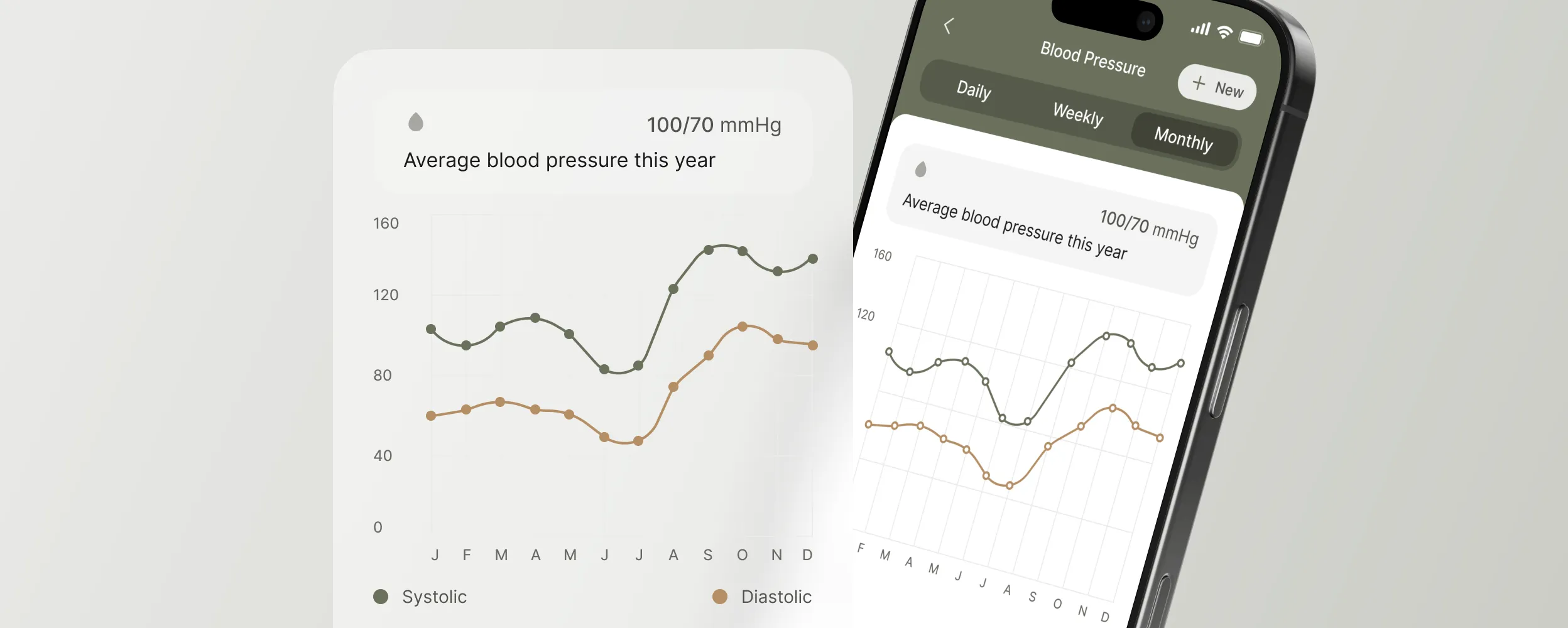
From One Grandma’s Check-In to a Platform
Caily’s story began with Wynter’s grandmother. Her mom was the primary caregiver, but the rest of the family often struggled to stay updated. Calls went unanswered, details got lost, and even basic questions like When is the next appointment? felt complicated.
The first idea was simple: a daily check-in feature so a loved one could say, I’m doing well today or I need extra help. That way, the whole family could respond.
As testing continued, it became clear that caregivers needed more than a check-in. They needed scheduling, medication management, record-keeping, and a way to share tasks across the entire family. What started as a small tool evolved into a comprehensive caregiving hub.
Why Fragmented Tools Don’t Work
Digital health has tried to help—with apps for scheduling, apps for medications, apps for health records. But here’s the paradox: the more fragmented the tools, the less likely families are to use them.
In practice, caregiving looks less like a spreadsheet and more like a chaotic relay race. One sibling manages meds, another books appointments, a neighbor drives, and a daughter checks in by phone. Add multiple apps into the mix, and the effort collapses.
“It got to the point where it was so overwhelming, no one was using any of it,” Wynter recalls. That’s the caregiver paradox: tools designed to lighten the load can add more weight.
Caily’s answer is a single hub where caregivers manage everything from check-ins to calendars to requests for help—with the care receiver still at the center.
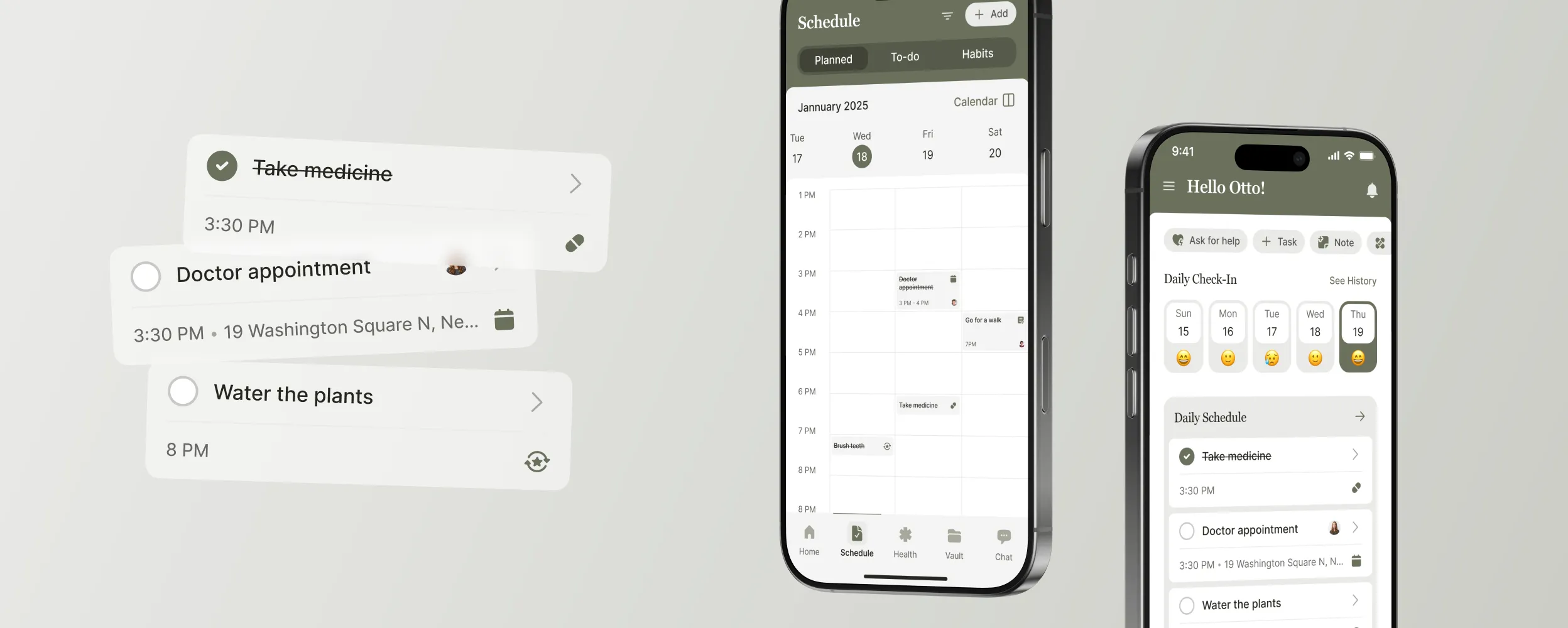
The Care Circle Model
Caily’s core innovation isn’t just technology—it’s a philosophy of care. Instead of one exhausted person carrying the load, Caily enables caregivers to share responsibility within a care circle of family, friends, and professionals.
- Daily check-ins give caregivers visibility into how their loved one is really doing.
- Shared calendars and tasks distribute the workload instead of piling it on one person.
- Requests for help make it simple to delegate without guilt.
- Health record and medication integration ties everyday caregiving back to clinical needs.
For caregivers, this transforms what used to feel like an isolated burden into a shared, sustainable system. For care receivers, it reduces loneliness and anxiety by ensuring support doesn’t depend on a single person.
A Peek Inside the App
When a caregiver opens Caily, the home screen shows everything at a glance: today’s check-ins, the shared calendar, and open tasks. Need a ride to an appointment? One caregiver can send a request to the group; another can pick it up with one tap.
Navigation is simple—health, schedule, chat, and tasks are all one step away. And for families where some members aren’t comfortable with technology, Caily offers a simplified view that strips down to just the essentials.
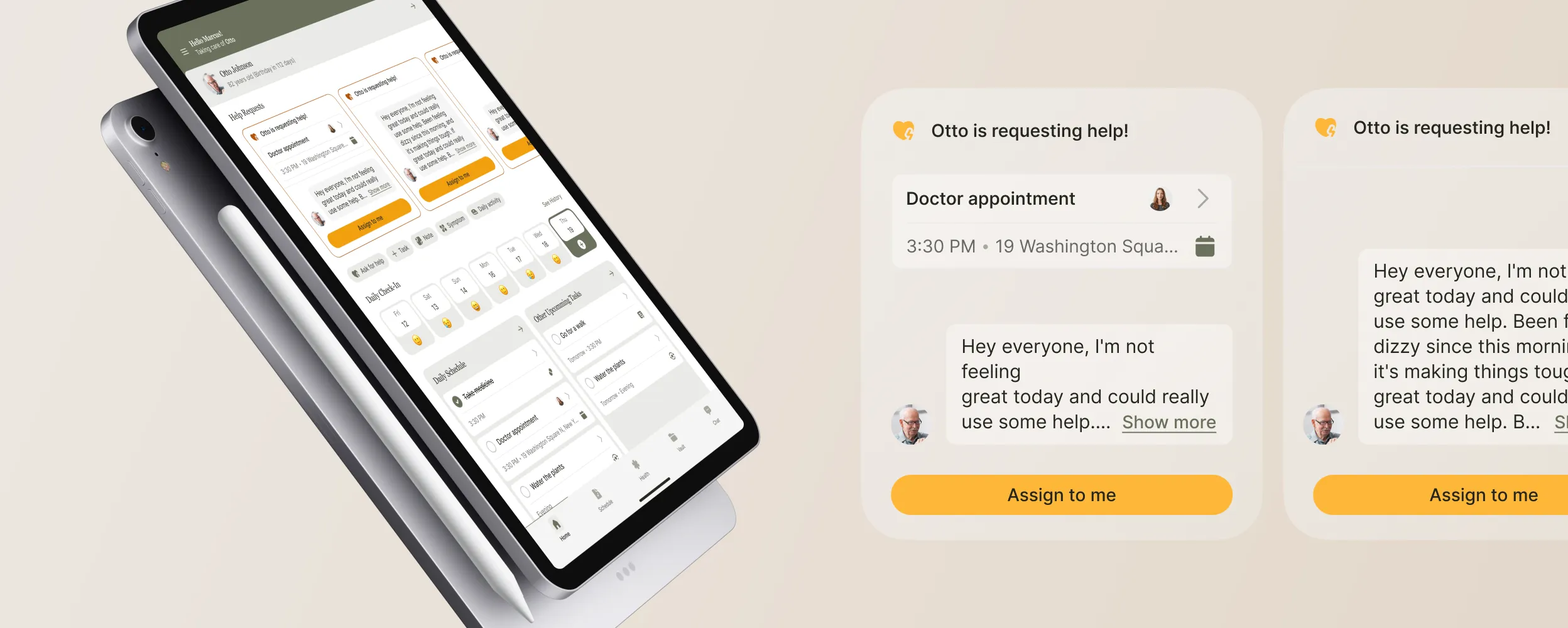
Why Healthcare Expertise Matters
Caregiving platforms aren’t lifestyle apps. They’re part of healthcare infrastructure—which means HIPAA compliance, EHR integration, permission controls, and security architecture are non-negotiable.
That’s why Wynter’s team interviewed 60+ development partners worldwide before choosing Momentum.
“We knew the wrong partner could break this,” Wynter explains. “Momentum specialized in healthcare. From HIPAA to EHR integrations, they knew the landscape. But they also helped us think through what caregiving actually feels like—not just what it looks like on paper.”
That expertise allowed Caily to balance empathy with compliance, protecting sensitive data without creating friction for already overwhelmed families.
Design for Confidence, Not Competence
Caily’s testing revealed something crucial: adoption isn’t about age, it’s about confidence. Some caregivers and family members mastered every feature in an hour. Others needed weeks just to try a check-in.
The solution was progressive disclosure. Caregivers can start with just the essentials—one check-in button, one schedule, one request tool—and grow into the platform as confidence builds.
This approach ensures inclusivity across families with very different levels of tech comfort.
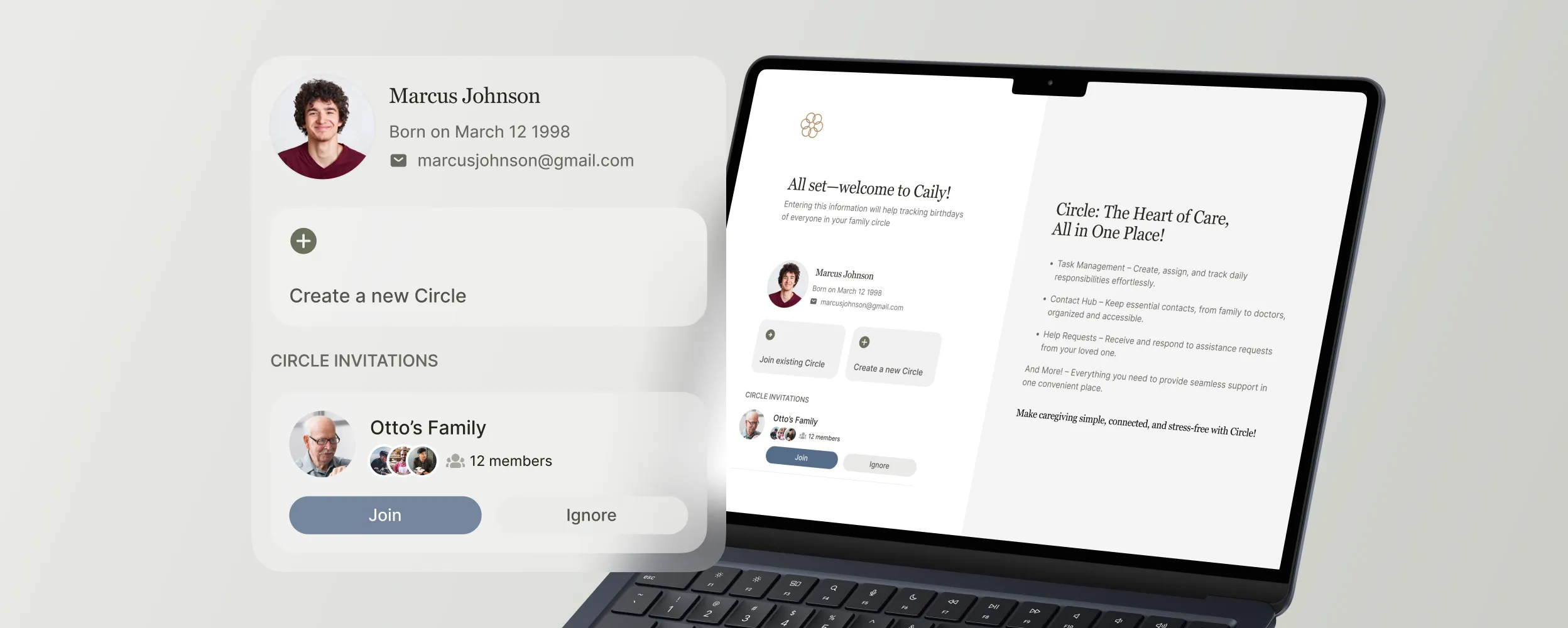
Mission Attracts Talent
Caregiving touches nearly everyone. When Wynter’s team hired, candidates often began by sharing their own caregiving stories. That personal connection shaped the product: from accessible design to data safeguards, every decision carried empathy.
For a caregiver-facing platform, that kind of alignment matters. It ensures the people building the technology understand the lives it’s meant to serve.
Caregiving Is Healthcare Infrastructure
Caregiving isn’t just a private duty. It’s a pillar of healthcare. Every hour spent driving to appointments or managing medications is value not captured in reimbursement codes but essential to outcomes.
If healthcare is to become sustainable, families need infrastructure too. That means treating caregiver platforms not as “nice-to-haves,” but as critical infrastructure—the connective tissue between medical care and daily life.
As Wynter says:
“Caregiving is love in action. But love needs infrastructure. Without it, families burn out. With it, patients live better, and caregivers survive the journey.”
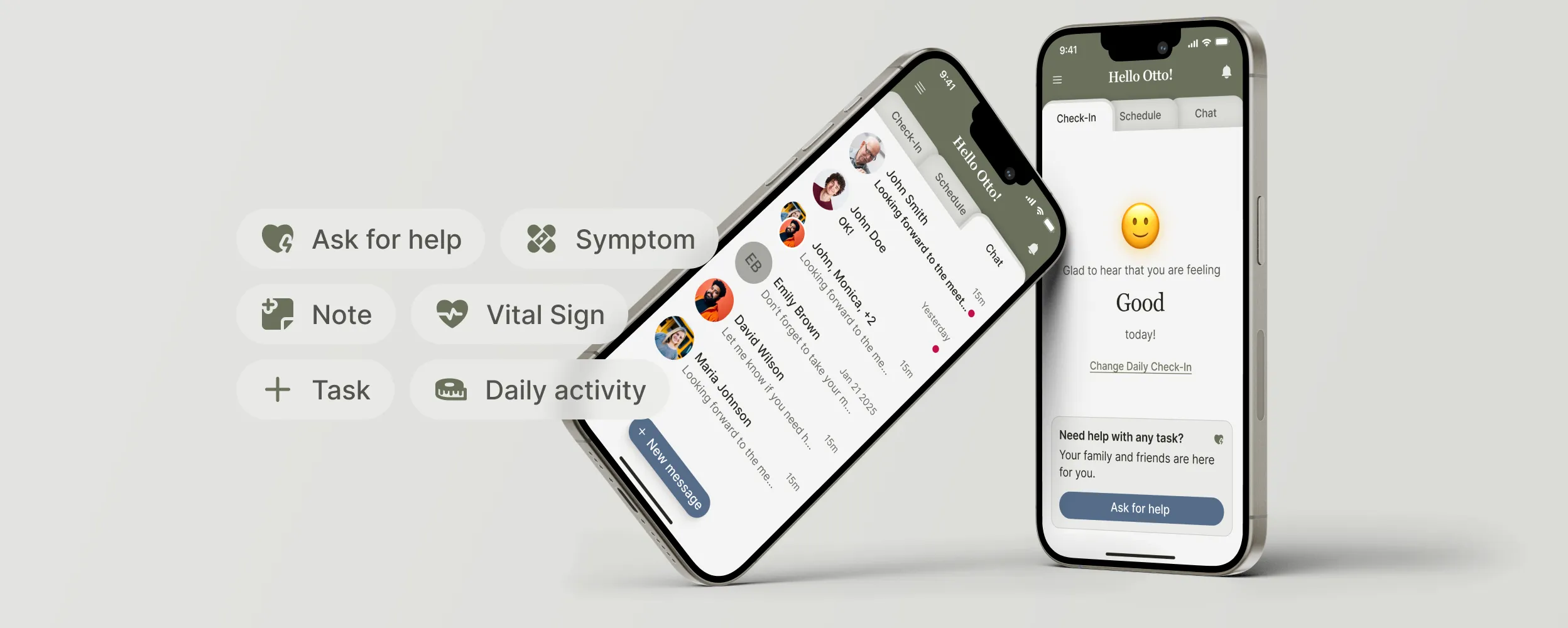
Final Thought
The future of healthcare won’t be built only in hospitals, labs, or AI-powered diagnostics. It will also be built in the tools that help families shoulder the hidden work of care.
Platforms like Caily show what becomes possible when caregivers get the support they need. And at Momentum, we’re proud to have helped design and build Caily’s product from the ground up—balancing compliance, empathy, and scalability in a space where it matters most.
You can read the full story in our Caily case study.
Liked the read? Hear the full story on the podcast.
If you want the full story—complete with Wynter’s personal journey into caregiving, the pivots that shaped Caily’s product, and her lessons on building technology that families will actually use—tune into the full episode of Keep IT Healthy. It’s an honest look at what it takes to design for one of healthcare’s most overlooked realities.
We created Keep IT Healthy to give the mic to the people doing the real work of transforming care. Each episode features unscripted conversations with healthtech leaders—from early-stage founders to clinical CIOs—sharing what really happens behind the buzzwords.
If that’s your world, or the one you want to build in, it’s your podcast.



















